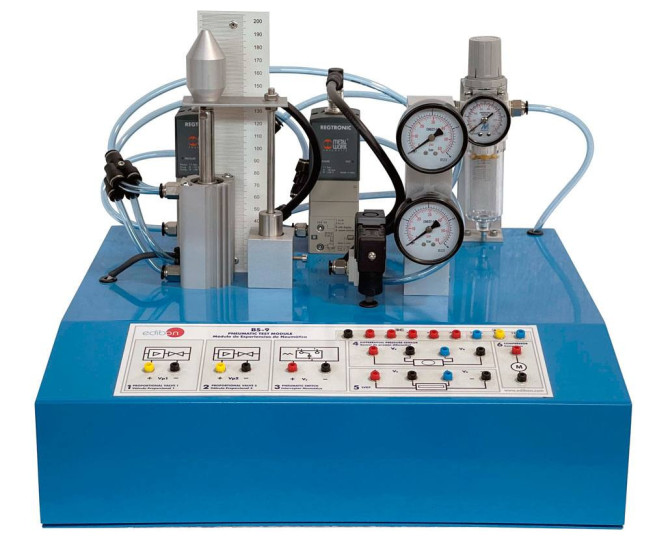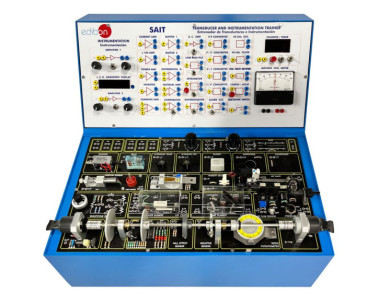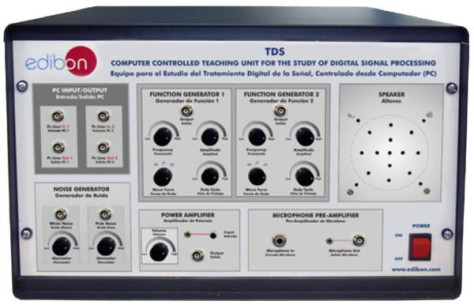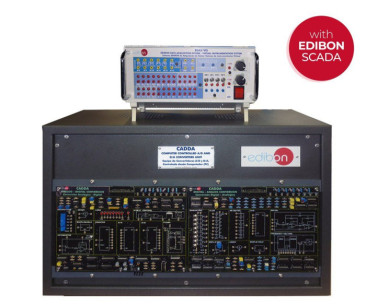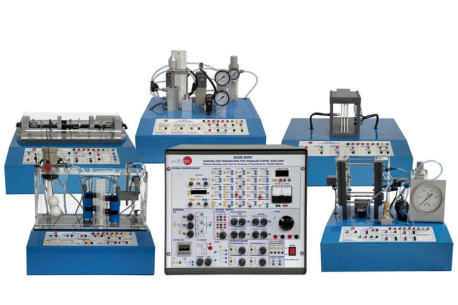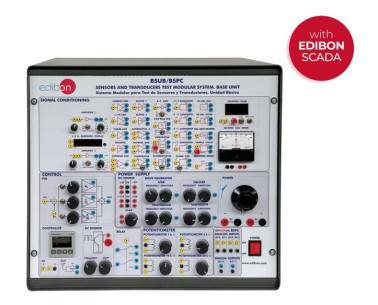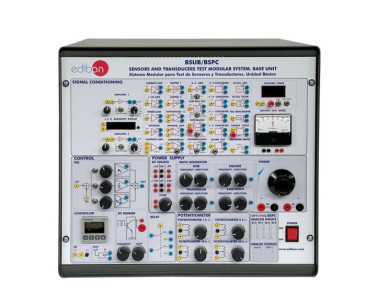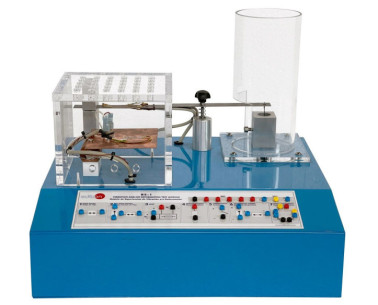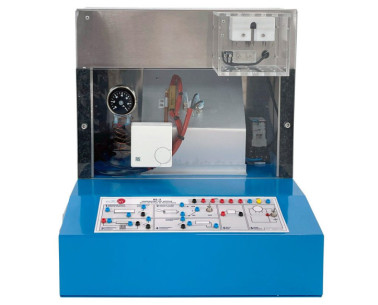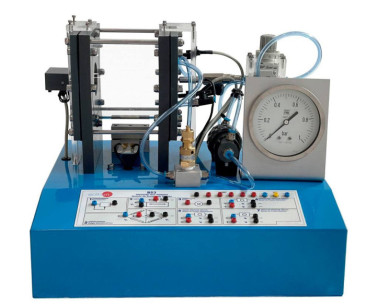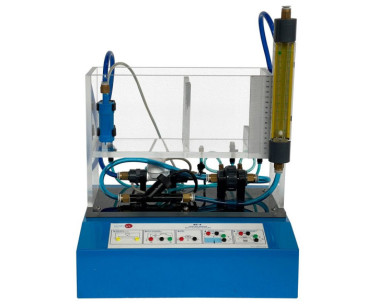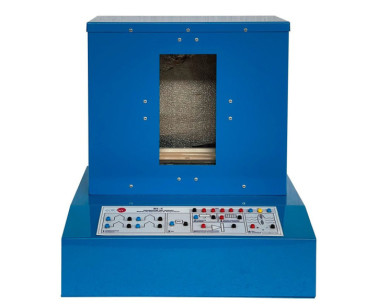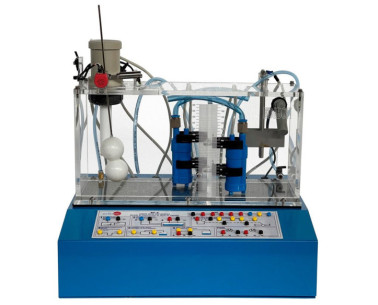BS9 空気圧試験モジュール
革新的なシステム
The Pneumatics Test Module, "BS9", has been designed to teach techniques of control and handling of a pneumatic piston.
研究室
関連ニュース
概要
The Pneumatics Test Module, "BS9", has been designed to teach techniques of control and handling of a pneumatic piston.
All connections of the different BS9 mechanisms will have output through a group of 2 mm. terminals. They are placed in the front panel of the test module with a diagram representing their functions.A double-action pneumatic piston is used to move a platform placed on the upper part of the piston axle. The control of the air inlet to the piston is carried out using two proportional electronic valves.
There is a differential pressure sensor is connected between both pneumatic piston air inlets. This way the pressure difference between both inlets can be obtained any time. At one of the air inlets to the piston there is connected in series a pneumatic switch that works as air output in the circuit.
An compressor, located inside the steel box, must provide the compressed air needed for this unit to operate. A LVDT sensor will indicate the displacement of the pneumatic piston axle. Included elements:
- Two Proportional valves.
- Differential pressure sensor.
- Pneumatic switch (2 positions).
- Linear displacement sensor (LVDT).
- Regulating filter with manometer.
- Manometer indicator of pressure in proportional valve 1.
- Manometer indicator of pressure in proportional valve 2.
- Air compressor (located inside the steel box).
演習と指導の慣行
マニュアルに含まれるガイド付き実習
- Proportional valves. To control electronically the vertical displacement of a double effect pneumatic piston using proportional valves.
- Differential pressure sensor. To use a pressure sensor for measuring the pressure difference between both pneumatic piston air inlets.
- Pneumatic switch. To deflect the air flow using a pneumatic switch.
- LVDT Linear Displacement Sensor. To measure pneumatic piston displacement using an excitation and DC output LVDT.
補完的な機器
デジタル信号処理学習用コンピューター制御指導用装置
コンピュータ制御によるA/D、D/Aコンバータユニット(PC)
センサースタディモジュールシステム
コンピュータ(PC)で制御されるBSの基本ユニット
BSの基本ユニット
振動および/または変形試験モジュール
温度試験モジュール
圧力試験モジュール
流量試験モジュール
炉の試験モジュール
液面試験モジュール
品質

アフターサービス

 クッキーの設定
クッキーの設定

